Tramadex detoxification in holistic rehab thailand
Tramadex detoxification
“Turning the impossible into possible”

"Detox from Tramadex at a Luxury Holistic Center in Thailand and Israel"

Detox from Tramadex
“Tramadex detoxification at DaoTherapy takes place in a holistic environment that emphasizes both mental and physical healing. This process includes a gradual reduction of Tramadex dosage, under professional supervision, to minimize withdrawal symptoms such as pain, irritability, and anxiety. Patients participate in complementary therapies like yoga, meditation, and breathing techniques, which promote relaxation and enhance self-awareness. The DaoTherapy team provides emotional support and practical tools to address challenges, facilitating personal and spiritual growth. This approach not only eases the detox process but also improves quality of life, leading to profound recovery following Tramadex addiction.
Tramadex, also known as Tramadol, is an opioid pain reliever widely used for alleviating various levels of pain.”
"Holistic Center for Trauma, Addiction, and Mental Imbalance Treatment in Thailand"
“Come to the beginning of your journey to freedom from addiction to alcohol, drugs, and pills, and rediscover your life within the serene embrace of DaoTherapy Rehab in Thailand—where holistic healing meets empowering recovery.”
DaoTherapy Holistic Rehab
Key Elements of Tramadex Detox:
Medical Supervision: Tramadex detox must be conducted under medical supervision, as the body may experience withdrawal symptoms. These can include nausea, anxiety, muscle aches, and insomnia. A medical team will monitor and manage these symptoms to ensure the patient’s safety and comfort.
Holistic Therapies:
Holistic Therapies: Many detox programs incorporate holistic therapies such as mindfulness, yoga, and meditation to help individuals cope with stress and anxiety during the detox process. These therapies support the mind-body connection and contribute to overall recovery.
Tapering Process
Tapering Process: Tramadex detox often involves a gradual tapering of the drug to reduce withdrawal severity. Doctors will slowly decrease the dosage over time to allow the body to adjust to lower levels of the substance.
Psychological Support:
Psychological Support: Like any addiction recovery process, detox from Tramadex includes psychological support. This can involve counseling, therapy, or support groups to address the mental and emotional aspects of addiction.
Post-Detox Treatment:
Post-Detox Treatment: After completing detox, continuing treatment is crucial to prevent relapse. This often includes participation in ongoing therapy, group support, and the development of new coping strategies to maintain sobriety.
General Background and History of Tramadol:
Tramadol, also known by the brand name Tramadex, was first developed in Germany in 1962 by the pharmaceutical company Grünenthal GmbH. The company sought an effective pain-relieving drug with a lower risk of addiction and severe withdrawal symptoms compared to classical opioids like morphine. Following research and development, tramadol became available in the 1970s and was marketed as a pain reliever for moderate to severe pain conditions.
Tramadol works uniquely compared to other opioids, providing pain relief through a dual mechanism. On one hand, it partially activates the mu-opioid receptors in the brain, reducing pain but producing less euphoria than stronger opioids. On the other hand, it inhibits the reuptake of neurotransmitters like serotonin and norepinephrine, which helps reduce pain perception and enhances a sense of calm.
Over the years, tramadol gained popularity worldwide as a pain reliever for mild to moderate pain and was perceived as a safer alternative to stronger painkillers. However, despite the initial intention to develop a less addictive drug, tramadol was found to have addictive potential, particularly with prolonged use or at high doses.
Today, tramadol is widely used in medicine but under more stringent supervision. It is primarily prescribed for chronic pain and acute pain that does not respond to other painkillers. Due to its potential for addiction and withdrawal symptoms, clear guidelines have been established for its controlled use and gradual tapering for patients who need to discontinue the drug.

contact us
Contact us with your questions
We would love to speak with you! Feel free to reach out with any questions.

get in touch
Schedule a free consultation
Schedule a free consultation with our team and let’s make things happen!
What You Need to Know About OxyContin Withdrawal:
Tramadex (Tramadol) withdrawal can be challenging due to the drug’s dual action as both an opioid receptor agonist and a reuptake inhibitor of serotonin and norepinephrine. Here’s what you need to know about Tramadex withdrawal:
1. Symptoms of Tramadex Withdrawal
– Early Symptoms: Initial withdrawal symptoms can appear within hours to a day after the last dose. These may include anxiety, sweating, insomnia, restlessness, and runny nose.
– Later Symptoms: As withdrawal progresses, symptoms can intensify. Common symptoms include nausea, vomiting, diarrhea, muscle aches, chills, fatigue, and drug cravings. Psychological symptoms, such as mood swings, depression, and irritability, can also be pronounced.
2. Duration of Withdrawal
– The acute phase of Tramadex withdrawal usually lasts about a week, but some symptoms—especially fatigue, sleep disturbances, and psychological effects—can persist for weeks or even months in some cases (known as post-acute withdrawal syndrome, or PAWS).
3. Unique Challenges with Tramadex Withdrawal
– Because Tramadex acts on both opioid receptors and neurotransmitters, withdrawal can include both opioid-like symptoms and symptoms similar to antidepressant withdrawal, such as dizziness, mood swings, and irritability. This makes Tramadex withdrawal unique compared to other opioids.
4. Tapering Off Tramadex
– A gradual reduction of the Tramadex dosage, known as tapering, is often recommended to minimize withdrawal symptoms. Tapering should be done under medical supervision, allowing the body to adjust gradually and making withdrawal more manageable.
5. Managing Withdrawal Symptoms
– Medication Support: Certain medications, like clonidine, can help alleviate symptoms like anxiety and sweating. Non-opioid pain relievers and anti-nausea medications may also provide relief. However, it’s essential to consult a healthcare provider for appropriate options.
– Alternative Therapies: Practices like yoga, meditation, acupuncture, and breathing exercises can help manage stress, improve mood, and promote relaxation during withdrawal.
– Nutritional Support: Staying hydrated, eating a balanced diet, and taking supplements as recommended can help support the body during withdrawal and reduce fatigue.
6. Emotional and Psychological Support
– Tramadex withdrawal can trigger significant psychological symptoms, including anxiety, depression, and irritability. Counseling, support groups, and family support are invaluable for emotional stability and motivation during the process.
7. Long-Term Recovery and Relapse Prevention
– Tramadex detox is just the first step in recovery. Ongoing therapy, counseling, and support groups are essential for addressing the root causes of addiction and preventing relapse.
– Building healthy coping strategies, managing stress effectively, and establishing a supportive network can significantly improve the chances of long-term success.
8. Why Medical Supervision is Important
– Withdrawal from Tramadex can be physically and mentally demanding. Medical supervision helps ensure a safe detox process, symptom relief, and a more successful recovery.
Tramadex withdrawal involves a combination of physical and psychological symptoms due to its effects on opioid receptors and neurotransmitters. A supervised, gradual tapering process, along with physical and emotional support, is essential for a safe and effective detox.
Characteristics of Tramadex Addiction:
Tramadex (Tramadol) addiction can develop when the drug is misused or taken for extended periods, as it has both opioid-like properties and effects on neurotransmitter systems. Here are the primary characteristics of Tramadex addiction:
1. Dependence vs. Addiction
– Dependence: With prolonged use, the body can become physically dependent on Tramadex, meaning that withdrawal symptoms will occur if the drug is stopped or reduced. Dependence can develop even when taken as prescribed.
– Addiction: Addiction, however, involves compulsive use, an inability to control intake, and continued use despite harmful consequences. This is a behavioral and psychological condition beyond mere physical dependence.
2. Tolerance Development
– Over time, individuals may develop a tolerance to Tramadex, meaning they need higher doses to achieve the same pain relief or calming effects. This increased dosage can lead to misuse and escalate into addiction.
3. Drug-Seeking Behavior
– A person addicted to Tramadex may exhibit drug-seeking behaviors, such as obtaining prescriptions from multiple doctors (doctor shopping), taking higher doses than prescribed, or acquiring Tramadex from unauthorized sources.
4. Loss of Control Over Use
– One of the defining signs of addiction is the inability to control use, even when aware of the negative consequences. Individuals may take more Tramadex than needed, use it more frequently, or continue its use even when it’s no longer necessary.
5. Physical and Psychological Cravings
– People addicted to Tramadex often experience strong cravings for the drug. These cravings can be both physical (due to dependence) and psychological (seeking relief from stress or emotional pain).
6. Neglecting Responsibilities
– Tramadex addiction can lead to neglect of personal, professional, or social responsibilities. This may manifest as poor job performance, strained relationships, or disregard for personal care and health.
7. Mood and Mental Health Effects
– Chronic use or addiction to Tramadex can lead to significant mental health changes, including mood swings, depression, anxiety, irritability, and even paranoia. Cognitive issues, such as impaired judgment and concentration, can also arise.
8. Physical Symptoms of Addiction
– Physical symptoms of Tramadex addiction can include:
– Drowsiness and sedation
– Constipation
– Nausea and vomiting
– Muscle weakness
– Shallow or slowed breathing
– Sweating or hot flashes
These effects may become more pronounced with prolonged or high-dose use.
9. Social Isolation
– Many individuals addicted to Tramadex may withdraw from friends and family, prioritizing drug use over social interactions and relationships. Social isolation is often a common pattern in addiction.
10. Risk of Overdose
– High doses of Tramadex can lead to overdose, particularly when mixed with other depressants like alcohol or sedatives. Overdose symptoms include severe drowsiness, slow or irregular breathing, unconsciousness, and seizures, which can be life-threatening.
11. Difficulty in Quitting
– People addicted to Tramadex often find it difficult to stop due to intense withdrawal symptoms and strong cravings. Unsuccessful attempts to quit may lead to a cycle of relapse and further dependency.
12. Escalation of Use
– As addiction deepens, individuals may increase their dosage or take the drug more frequently to achieve the same effects, leading to a pattern of misuse that can increase the risk of side effects and overdose.
13. Impact on Quality of Life
– Tramadex addiction can severely impact a person’s quality of life, affecting their physical health, mental well-being, relationships, and daily functioning.
Treatment for Tramadex Addiction
– Effective treatment generally includes a combination of medical detox, behavioral therapy, counseling, and support groups. A gradual reduction in dosage under medical supervision is often necessary to minimize withdrawal symptoms, along with addressing underlying issues that contribute to addiction.
Recognizing the signs of Tramadex addiction early is essential for seeking treatment and beginning the journey toward recovery.
More Severe Side Effects of Tramadex :
Tramadex (Tramadol) is generally used for pain relief but can cause severe side effects, particularly with prolonged or high-dose use. Here are some of the more severe side effects associated with Tramadex:
1. Respiratory Depression
– Tramadex can significantly slow breathing, particularly in high doses or when combined with other central nervous system depressants like alcohol or benzodiazepines. This can lead to dangerously shallow or stopped breathing, which is life-threatening.
2. Seizures
– One of the more serious risks of Tramadex is seizures. Higher doses, prolonged use, or combining Tramadex with certain medications (like antidepressants) can increase the likelihood of seizures. Individuals with a history of epilepsy or seizures are at even higher risk.
3. Serotonin Syndrome
– Tramadex increases serotonin levels in the brain, and when taken with other medications that also boost serotonin (like certain antidepressants), it can lead to serotonin syndrome. This condition is potentially fatal and includes symptoms like confusion, rapid heart rate, high blood pressure, muscle rigidity, sweating, and agitation.
4. Hypotension and Heart Problems
– Tramadex can cause low blood pressure (hypotension), which may lead to dizziness, fainting, or even collapse. In some cases, it can also lead to arrhythmias (irregular heartbeats) or other heart complications, particularly in individuals with pre-existing heart conditions.
5. Severe Allergic Reactions
– Some people may experience severe allergic reactions to Tramadex, including swelling of the face, throat, or tongue, hives, and difficulty breathing. An allergic reaction to Tramadex is a medical emergency and requires immediate intervention.
6. Physical and Psychological Dependence
– Long-term use of Tramadex can lead to physical and psychological dependence, making it difficult to stop without experiencing withdrawal symptoms. This can contribute to addiction and misuse, which may further impact health and quality of life.
7. Cognitive Impairment
– Prolonged use or high doses of Tramadex can lead to confusion, memory problems, and other cognitive impairments, affecting daily functioning, decision-making, and safety, especially in activities like driving.
8. Hormonal Imbalances
– Tramadex may affect hormone levels, leading to decreased testosterone in men and changes in reproductive hormones in both genders. Symptoms may include fatigue, decreased libido, and other hormone-related issues.
9. Gastrointestinal Issues
– Severe gastrointestinal problems, including extreme constipation, nausea, vomiting, and abdominal pain, are common with Tramadex use. In some cases, constipation may lead to bowel obstruction, which can be life-threatening if untreated.
10. Mood Disorders and Mental Health Effects
– Tramadex can exacerbate or cause mood disorders, including depression, anxiety, and even paranoia. Individuals with a history of mental health conditions may experience worsened symptoms or new-onset psychological effects.
11. Increased Risk of Overdose
– Due to its opioid effects, Tramadex carries a risk of overdose, especially when taken in high doses or combined with other depressants. Symptoms of overdose include extreme drowsiness, slow or stopped breathing, cold or clammy skin, and unconsciousness. Overdose can be fatal and requires immediate medical attention.
12. Liver and Kidney Damage
– Since Tramadex is metabolized by the liver and excreted by the kidneys, prolonged use can place stress on these organs, potentially leading to liver or kidney damage over time.
13. Vision Problems
– Blurred vision or other changes in eyesight can occur with Tramadex use, and in severe cases, these visual disturbances may impair daily activities.
While Tramadex can be effective for managing pain, especially in the short term, it has severe side effects, particularly with long-term use, high doses, or misuse. Due to these risks, Tramadex should only be used under strict medical supervision, with regular monitoring to minimize complications.
Psychological Support:
Psychological Support: Like any addiction recovery process, detox from Subutex includes psychological support. This can involve counseling, therapy, or support groups to address the mental and emotional aspects of addiction.
Information about Tramadex and Its Mechanism of Action:
Tramadex, also known as Tramadol, is a synthetic opioid used primarily for moderate to severe pain relief. It is unique among opioids due to its dual mechanism of action, which allows it to target pain through both opioid and non-opioid pathways.
Mechanism of Action
1. Opioid Receptor Activation
– Tramadex acts as a partial agonist at the mu-opioid receptors in the brain and spinal cord. By binding to these receptors, it alters the perception of pain, reducing discomfort and providing relief. However, as a partial agonist, it produces a milder opioid effect compared to drugs like morphine, which are full agonists. This reduced activity may help decrease the risk of severe respiratory depression and euphoria, making it somewhat safer but still with addictive potential.
2. Inhibition of Serotonin and Norepinephrine Reuptake
– In addition to its opioid action, Tramadex also inhibits the reuptake of two key neurotransmitters: serotonin and norepinephrine. By preventing the reabsorption of these neurotransmitters, it increases their availability in the brain, which contributes to pain relief and can improve mood. This mechanism is similar to that of certain antidepressants and plays a role in reducing pain perception.
3. Dual Pathway Pain Relief
– This combination of opioid receptor activation and neurotransmitter reuptake inhibition allows Tramadex to relieve pain through two separate pathways. This makes it particularly effective for certain types of pain, such as neuropathic pain, which may not respond well to traditional opioids alone.
Uses of Tramadex
– Pain Management: Tramadex is commonly prescribed for moderate to severe pain, including chronic pain conditions, post-surgical pain, and certain types of nerve pain. Its dual action provides a broader scope of pain relief compared to traditional opioids.
– Alternative for Mild to Moderate Pain: Due to its unique mechanism, Tramadex is sometimes used as an alternative to stronger opioids, especially when long-term pain management is needed. However, it still requires careful monitoring due to its addictive potential.
Pharmacokinetics
– Onset and Duration: Tramadex has a slower onset than some other opioids, taking about 1-2 hours to reach peak effect, and its pain-relieving effects last between 4-6 hours. Extended-release formulations are also available for more prolonged relief.
– Metabolism: Tramadex is primarily metabolized by the liver and excreted by the kidneys. The body breaks down Tramadex into an active metabolite that enhances its opioid effect, which is a reason for its analgesic potency.
Risks and Side Effects
Due to its opioid and non-opioid actions, Tramadex has a unique profile of side effects and risks. These include the potential for addiction, particularly when taken at high doses or for extended periods, as well as an increased risk of serotonin syndrome if combined with other serotonin-enhancing medications. Other side effects can include nausea, dizziness, drowsiness, constipation, and seizures.
Tramadex’s mechanism of action combines opioid receptor activation with serotonin and norepinephrine reuptake inhibition, making it effective for managing moderate to severe pain. This dual pathway provides pain relief and may improve mood but also increases the complexity of its side effects and potential interactions.
Physical Withdrawal Symptoms of OxyContin:
Withdrawing from Tramadex (Tramadol) can cause a range of physical symptoms due to the body’s dependence on both its opioid-like effects and its action on neurotransmitters like serotonin and norepinephrine. Here are the main physical symptoms of Tramadex withdrawal:
1. Muscle Aches and Joint Pain
– Muscle and joint pain is common as the body readjusts to functioning without Tramadex. This pain can be intense and persistent.
2. Sweating and Chills
– Profuse sweating followed by chills or cold flashes is a typical symptom, often making it difficult to maintain comfort.
3. Nausea, Vomiting, and Diarrhea
– Gastrointestinal symptoms are common and include nausea, vomiting, and diarrhea. These can lead to dehydration if not managed carefully.
4. Restlessness and Agitation
– Restlessness, particularly in the legs (often described as “restless leg syndrome”), is frequently reported and can make it hard to relax or sleep.
5. Insomnia and Sleep Disturbances
– Many individuals experience difficulty sleeping, with insomnia and frequent waking throughout the night. Sleep issues can persist even after other symptoms have subsided.
6. Fatigue and Weakness
– Intense fatigue and a feeling of physical weakness are common during Tramadex withdrawal, making even simple tasks feel exhausting.
7. Headaches
– Withdrawal can trigger persistent headaches, which can range from mild to severe and often last throughout the detox period.
8. Increased Sensitivity to Pain
– Known as opioid-induced hyperalgesia, individuals withdrawing from Tramadex may experience heightened sensitivity to pain, making normal aches and pains feel more intense.
9. Elevated Heart Rate and Blood Pressure
– During withdrawal, blood pressure and heart rate may temporarily increase, leading to feelings of anxiety and physical discomfort.
10. Dilated Pupils and Light Sensitivity
– Pupil dilation is a physical sign of opioid withdrawal and can cause sensitivity to light.
11. Yawning and Watery Eyes
– Excessive yawning and watery eyes are common and often occur in the early stages of withdrawal.
Duration of Physical Withdrawal Symptoms
Physical symptoms of Tramadex withdrawal typically start within 12-24 hours after the last dose, peak around days 2-3, and can last for about a week. Some lingering symptoms, such as fatigue and sleep disturbances, may persist for several weeks or longer in some cases.
Managing Withdrawal
Medical supervision, gradual tapering, and supportive therapies, including hydration and nutritional support, can help make the process safer and more manageable for those discontinuing Tramadex.
Psychological Support:
Psychological Support: Like any addiction recovery process, detox from Subutex includes psychological support. This can involve counseling, therapy, or support groups to address the mental and emotional aspects of addiction.








